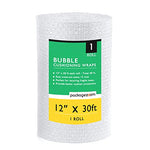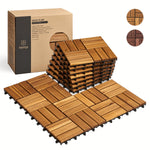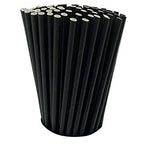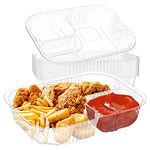You have no items in your shopping cart.
Are you wondering what to do with your old, worn-out carpets? Instead of adding them to the landfill, consider carpet recycling. In this article, we'll explore the benefits of carpet recycling, how it works, and where to find carpet recycling centers near you. Let's dive in and discover sustainable solutions for used carpets!
Why Should You Recycle Your Carpets?
Recycling your carpets offers numerous environmental and economic benefits. Let's take a closer look at why carpet recycling is a worthwhile endeavor.
1. Environmental Impact
When carpets end up in landfills, they take up valuable space and contribute to pollution. Synthetic carpets, in particular, release harmful chemicals as they break down, negatively affecting soil and water quality. By recycling carpets, we can significantly reduce the environmental impact associated with their disposal.
2. Resource Conservation
Carpet recycling allows for the reclamation of valuable resources. Carpets often contain materials like nylon, polyester, and polypropylene, which can be repurposed and used in the production of new carpets, plastic products, and even clothing. Recycling carpets reduces the need for raw materials and helps conserve natural resources.
3. Energy Savings
The production of carpets requires significant amounts of energy. By recycling carpets, we can save energy that would otherwise be consumed during the manufacturing process. Recycling a single square yard of carpet can save over 4,000 BTUs of energy!
How Does Carpet Recycling Work?
Now that we understand the importance of carpet recycling, let's explore the process involved in recycling old carpets.
1. Collection
The first step in carpet recycling is the collection of used carpets. Many recycling centers and organizations offer drop-off locations where you can bring your old carpets. Additionally, some carpet retailers may offer take-back programs, allowing you to return old carpets when purchasing new ones.
2. Sorting and Preparing
Once collected, the carpets are sorted based on material type and condition. Sorting ensures that different carpet components can be properly processed. Before recycling, the carpets may need to undergo cleaning and removal of adhesives or padding.
3. Recycling Methods
There are various methods used to recycle carpets, depending on the material type and desired end products. Common recycling techniques include:
- Mechanical Recycling: This method involves shredding the carpets into small pieces and processing them to extract fibers for reuse.
- Chemical Recycling: Chemical processes are used to break down carpets into their original components, such as polymers, which can then be used to create new products.
- Energy Recovery: In some cases, carpets that cannot be effectively recycled may be used as a fuel source for energy generation.
4. Manufacturing New Products
Once the carpets are processed and materials are extracted, they can be used in the manufacturing of new carpets, carpet padding, insulation materials, automotive parts, and more. These recycled products help reduce the demand for virgin materials and promote a circular economy.
Finding Carpet Recycling Centers Near You
Now that you're ready to recycle your old carpets, let's explore how to find carpet recycling centers near your location. Here are some useful methods:
1. Online Search
Start by conducting an online search using the keywords "carpet recycling near me." Search engines like Google will provide you with a list of recycling centers in your area. Make sure to include your location to get the most accurate results.
2. Local Waste Management Facilities
Contact your local waste management or recycling facilities to inquire about carpet recycling programs. They can provide you with information about drop-off locations or scheduled collection events.
3. Carpet Retailers
Reach out to carpet retailers in your area and ask if they offer take-back programs or can provide information on nearby carpet recycling centers. Some retailers have partnerships with recycling organizations to facilitate carpet recycling.
4. Local Community Groups and Organizations
Check if there are any community groups or organizations dedicated to sustainability and recycling in your area. These groups often have resources and information on local carpet recycling initiatives.
5. Online Directories
Explore online directories that specialize in recycling and waste management. Websites like Earth911 and RecycleNation allow you to search for carpet recycling centers by location.
6. Social Media and Online Forums
Engage with online communities focused on recycling and sustainable living. Social media platforms and forums can be valuable sources of information, as community members often share their experiences and provide recommendations.
Remember, availability and accessibility of carpet recycling centers may vary depending on your location. It's recommended to contact the centers beforehand to ensure they accept carpets and to inquire about any specific requirements.
FAQs about Carpet Recycling
1. Can all types of carpets be recycled?
Most carpets can be recycled, but the process may vary depending on the material composition. Synthetic carpets, such as nylon and polyester, are commonly recycled. However, carpets made of natural fibers like wool may have limited recycling options. It's best to check with your local recycling center for specific guidelines.
2. Should I remove the carpet padding before recycling?
It's advisable to remove the carpet padding before recycling. Carpet padding is often made of different materials, such as foam or rubber, which can have separate recycling processes. By separating the carpet and padding, you ensure that each component is properly recycled or disposed of.
3. Are there any recycling fees or costs involved?
Some carpet recycling centers may charge a small fee for accepting and processing carpets. However, many recycling programs operate at no cost to the consumer. It's important to inquire about any potential fees when contacting the recycling centers.
4. Can I recycle carpet remnants or small carpet pieces?
Yes, carpet remnants and small pieces can often be recycled. Many recycling centers accept these smaller carpet portions. However, it's essential to check with the recycling center about any size or quantity requirements they may have.
5. What are the alternatives to carpet recycling?
If recycling is not an option or if the carpet is still in usable condition, consider donating it to local charities, shelters, or community organizations. Reusing carpets can extend their lifespan and benefit those in need. Additionally, some carpets can be repurposed for DIY projects, such as creating mats or rugs.
6. What are the environmental benefits of recycling carpets?
Recycling carpets helps conserve resources, reduces energy consumption, and minimizes landfill waste. By recycling a single square yard of carpet, you can save approximately 2.7 kilograms of greenhouse gas emissions! Choosing carpet recycling supports sustainability and contributes to a greener future.
Conclusion
Recycling your old carpets is a simple yet impactful step towards a more sustainable lifestyle. By diverting carpets from landfills and enabling their transformation into new products, we can protect the environment and conserve valuable resources. Remember to explore local carpet recycling centers near you, follow the guidelines for proper preparation, and contribute to a circular economy. Let's make carpet recycling a priority and create a cleaner, greener future for generations to come.








